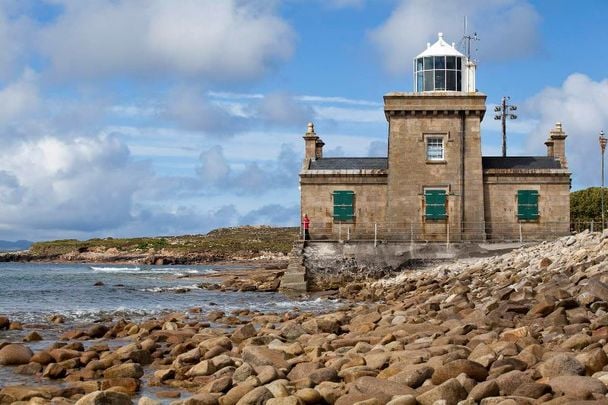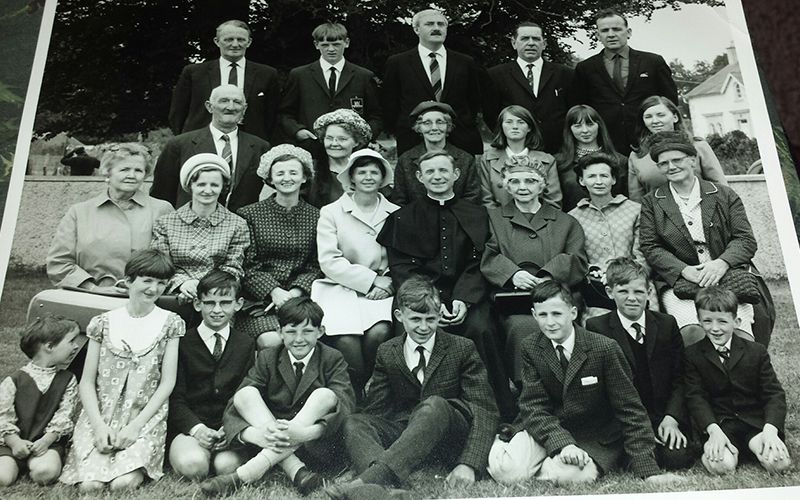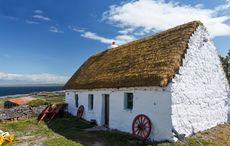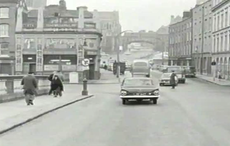On June 3, 1944, Irish Coast Guardsman and Blacksod Lighthouse keeper Ted Sweeney and his wife Maureen delivered a weather forecast by telephone from Co Mayo’s most westerly point.
The report convinced General Dwight D Eisenhower to delay the D-Day invasion for 24 hours, potentially averting a military disaster and changing the course of World War II.
In 2014, 70 years to the day from when Sweeney delivered his weather report, the D-Day Museum in Portsmouth was presented with Sweeney’s original Blacksod observation sheets, collated by the Irish Met Service, and including the actual weather observations which proved so crucial to the invasion.
The Irish Independent reported that evidence from Met Éireann forecasters reveals how the Blacksod day forecast changed the course of history.
Despite years of planning, in the days leading up to the attack, the Allied invasion would depend on one crucial and uncontrollable factor - the weather.
Although separate observations were taken at various locations by Royal Air Force, Royal Navy, and the United States Army Air Force meteorologists, an accurate forecast from the Irish Meteorological Service, based on observations from Blacksod on the Mullet Peninsula would be the most important.
Despite the country’s neutrality during the war, Ireland continued to send meteorological reports to Britain under an arrangement that had been agreed upon since Independence. According to the Irish Independent, Blacksod was the first land-based observation station in Europe where weather readings could be professionally taken on the prevailing European Atlantic westerly weather systems.
The Normandy invasion was originally planned for June 5. Nearly 5,000 ships and over 11,000 aircraft would carry approximately 156,000 troops into battle on the day across a 60-mile beachfront and into the interior of the Cotentin peninsula. Because of the importance of the landings by sea and by air, the 6th and 7th were also pinpointed as possible dates because the moon and tide conditions were then deemed ideal.
However, British and American forecasters could not agree on the likely weather conditions for the planned date.
According to the memoirs of Scotsman James Stagg, the chief meteorologist for the Normandy Landings, by June 2, the Americans were optimistic for a 'go' on June 5, whilst the British were "unmitigatedly pessimistic.” An agreement could not be reached.
Then, in the early morning hours of June 3, Irish Coast Guardsman and lighthouse keeper Ted Sweeney sent his hourly weather observation report, containing a warning of "a Force 6 wind and a rapidly falling barometer" at Blacksod.
Group Captain Stagg, stationed at Southwick House outside Portsmouth, studied the Blacksod report and advised General Dwight D Eisenhower to postpone for 24 hours. Eisenhower postponed the invasion to Tuesday, June 6.

Love Irish history? Share your favorite stories with other history buffs in the IrishCentral History Facebook group.
Sweeney, who died in 2001, said in an interview from 1994: "I was sending an hourly report 24 hours a day and night. It had to be phoned into London, (Dunstable). We got a query back.
"They asked for a check. 'Please check and repeat the whole report.' I was wondering what was wrong. I thought I had made some error or something like that.
"They sent a second message to me about an hour later to please check and repeat again. I thought this was a bit strange so I checked and repeated again. It never dawned on me that this was the weather for invading or anything like that.
"When I checked the report, I said: 'Thanks be to God, I was not at fault anyway.' I had done my job and sent over a correct reading to London."
Met Éireann analysis has confirmed that the Sweeneys' June 3 reports from Blacksod indicated a cold front lying halfway across Ireland and moving rapidly southeastwards and that a deep depression lay between Iceland and Scotland. Gale-force winds, low clouds, and heavy showers would still be affecting the English Channel in the early morning hours of June 5.
On June 4, the Sweeneys sent a report saying that heavy rain and drizzle cleared, clouds at 900ft, and visibility on land and the sea was very clear. An hour later, Blacksod would receive full clearance of the weather.
The following day, at Eisenhower's morning briefing, the latest report from Blacksod confirmed the passage of a cold front at Blacksod at noon on June 4 and confidence was restored, reports the Irish Independent.
Eisenhower's long-awaited weather clearance had arrived and he gave the order for Operation Overlord, as the invasion was named, to proceed. D-Day would be on June 6.




Comments